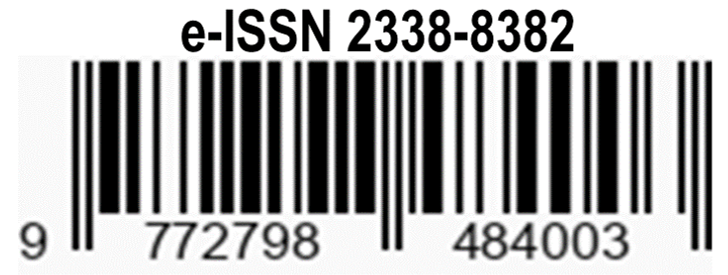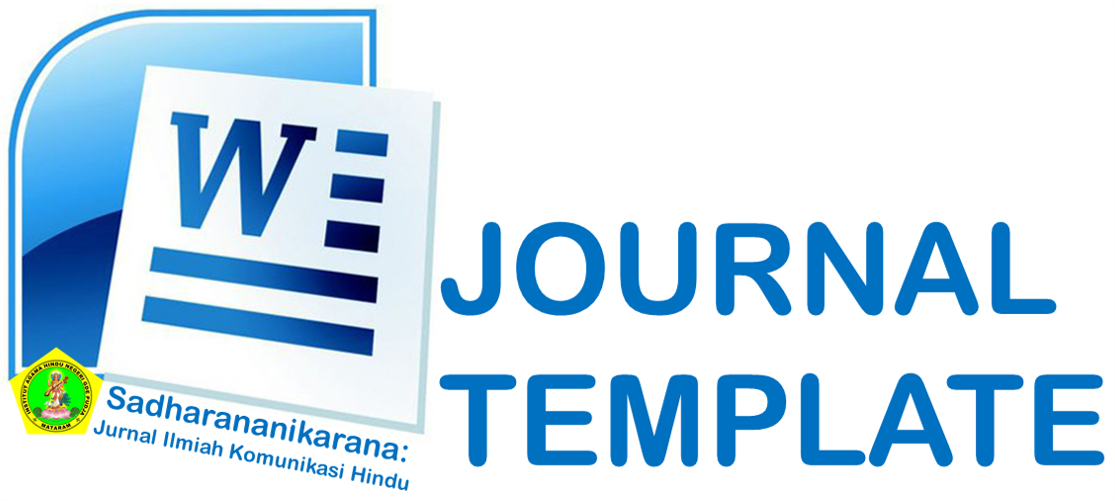Makna Penggunaan Cili Dalam Upacara Agama Hindu Di Kota Mataram
Abstract
The purpose of this study is to study the meaning of using ‘cili’ in a Hindu religious ceremony in Mataram as a vehicle to socialize it to the Hindus, because it had never been done by the parties concerned. Related with this phenomenon, in this study an essential aspect of the meaning of the use of cili in Hindu religious ceremonies in the City of Mataram will be revealed.
The benefits of this study are expected to be useful for the studies that lead to the formation of sradha bhakti (belief and devotion) to the Hindus in Mataram, especially the young generation. The theory used in this study are semiotic theory and symbol theory. This research is a qualitative research with a sociological approach, data collection techniques used are observation, interviews, and recording documents. Data analysis in this study was carried out with the stages of data reduction, data presentation and data verification. Furthermore, the data is presented in the form of reduction, classification, display and interpretation
The results showed that the ‘cili’ is a symbol of the embodiment of goddess Sri, its shape is pointed, the waist slender both legs as if covered with cloth. In performing the worship ceremony for The Supreme God (Ida Hyang Widhi Wasa), especially in the implementation of the Panca Yadnya ceremony, always use embodiments of cili, either it is made from coconut leaves, palm leaves, and flour. Therefore, Cili has meaning as a manifestation of goddess Sri (dewi Sri) and developing of art.
References
Badudu, JS, 2001. Kamus Umum Bahasa Indonesia. Jakarta:Pustaka Sinar Harapan
Kaelan, 2005. Metode Penelitian Kualitatif Bidang Filsafat. Yogyakarta: Paradigma.
Koentjaraningrat, 1998. Metode-Metode Penelitian Masyarakat. Jakarta: Gramedia.
Miles, B Matthew dan Huberman, A Michael, 1992. “Analisis Data Kualitatif”. Jakarta: Universitas Indonesia (UI-Press).
Moleong, Lexy, J, 2002. Metodologi Penelitian Kualitatif. Bandung: PT. Remaja Rosda Karya.
Soekartingsih, dkk, 2000. Tinjauan Sejarah Serta Hakikat Simbol Kesuburan. Denpasar: Proyek Pembinaan Permuseuman Bali.
Subagiastha, I, Ketut, dkk, 1996. Acara Agama Hindu. Jakarta: Departemen Agama.
Subagyo, Joko, 2006. Metode Penelitian Dalam Teori dan Praktek. Jakarta: Rineka Cipta.
Subama, M dan Sudrajat, M. 2005. Dasar-Dasar Penelitian Ilmiah. Bandung: Pustaka Setia.
Sugiyono, 2008. Metode Penelitian Kuantitatif – Kualitatif Dan R & D. Bandung: Alfabeta.
¬¬¬¬¬¬¬¬¬¬¬¬¬¬¬¬¬¬¬¬¬¬¬¬¬¬¬¬¬¬¬¬Suharsimi, Arikunto, 2002. Prosedur Penelitian Suatu Pendekatan Praktek. Jakarta: Rhineka Cipta.
Suprayogo, Imam dan Tabroni, 2001. Metodologi Penelitian Sosial-Agama. Bandung: PT. Remaja Rosdakarya.
Wiana, I Ketut, 1997. Memelihara Tradisi Veda. Denpasar: Balai Pustaka
Widia, I Wayan, dkk, 1989.Cili sebagai Lambang Dewi Kesuburan di Bali. Denpasar: Proyek Pembinaan Permuseuman Bali.
Sumber Internet :
www.mataramkota.go.id





.png)


.png)






